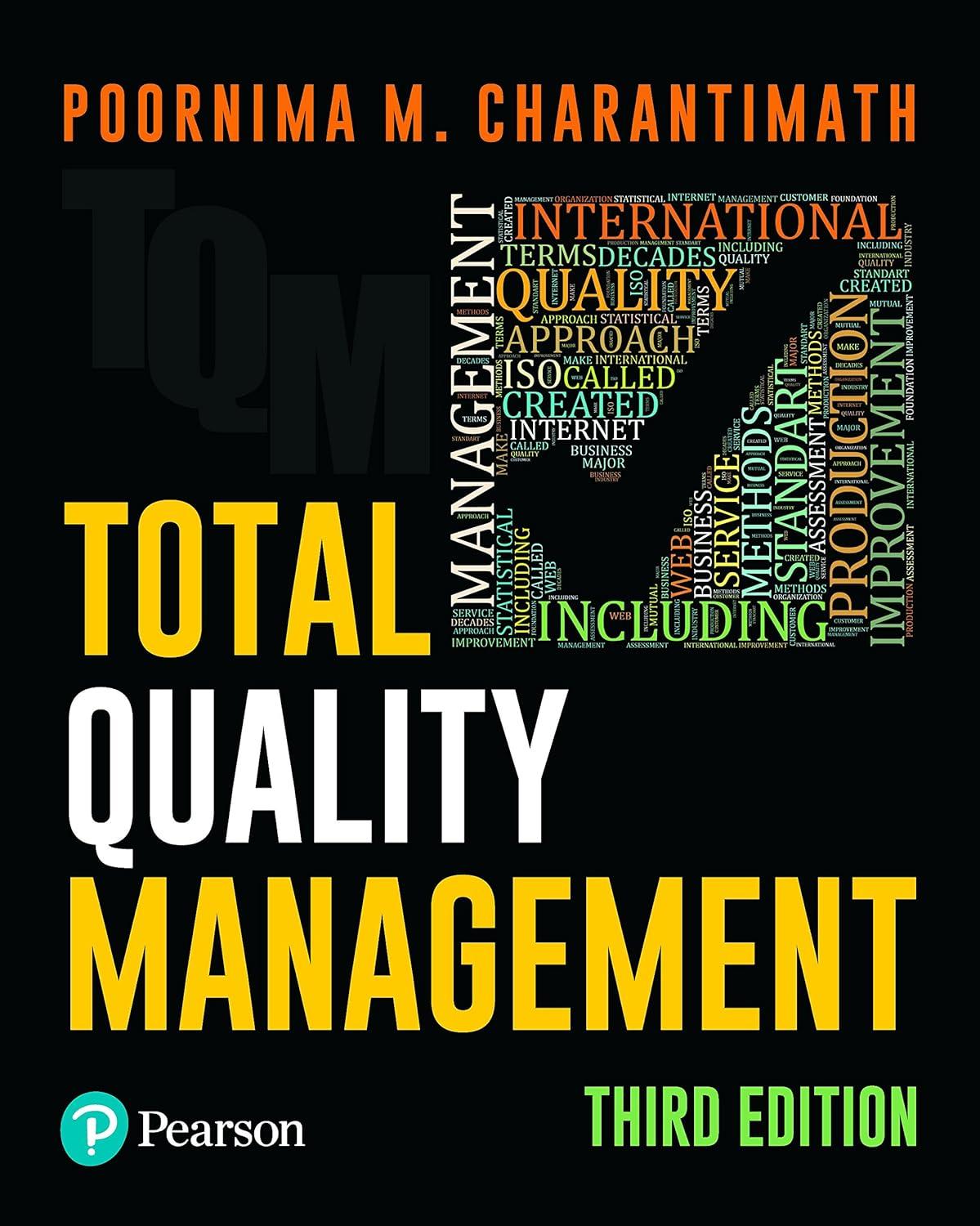Sundaram-Clayton Ltd is a member of the TVS group, one of the largest automotive components manufacturing groups
Question:
Sundaram-Clayton Ltd is a member of the TVS group, one of the largest automotive components manufacturing groups in India, with total sales revenue of more than USD 2.5 billion. The group has been able to achieve success through its commitment to the cherished values of promoting trust, value and customer service.
The Company
Sundaram-Clayton has two divisions, namely Brakes Division and Die Casting Division.
SCL-Brakes Division commenced its operations in 1962 at Chennai in collaboration with Clayton Dewandre Holdings Limited, UK (now part of WABCO Automotive group). SCL’s Brakes Division pioneered the manufacture of air and air-assisted braking actuation system products. A market leader since inception, SCL’s Brakes division develops and manufactures products for a wide range of commercial and off-highway vehicles.
SCL’s Understanding of TQM
TQM is a company-wide effort aimed at continuous quality improvement of all processes, products and services through total employee involvement that results in increasing customer satisfaction, loyalty and improved business results.
It is an approach focusing on breakthrough improvements in selected areas identified strategically and continuous improvement in other critical areas. Appropriate training, discipline and ordering of things—the mantra of Japanese quality covering the breadth and depth of processes, enable the building of a system of excellence. Such a process doesn’t give birth to extraordinary people but brings out extraordinary results from ordinary people.
TQM at Sundaram-Clayton
A TQM journey at Sundaram-Clayton involves the identification of critical problems, finding their solutions, standardization and passing it on for control and further improvement.
Such a model is applicable to all cultures and countries. Leadership builds culture in an organization and culture builds the next generation of leaders. This ensures that there are quality leaders in the pipeline, which is the concept of sustainable leadership.
During the days when the Indian commercial vehicle industry was stagnant, Sundaram Clayton’s fortunes depended entirely on the air braking systems it supplied to commercial vehicle manufacturers. The company was solely dependent on the fortunes of that industry.
Both sales and profits had seen sharp declines.
The man to machine ratio was 3:1—each machine required three workers, one to load and unload the component, another to switch-on the machine and the third to inspect the part’s quality. Similarly, the plant layout was process-oriented, which resulted in the accumulation of inventories. Peer-to-peer communication was poor. And, as is usual, middle level managers along with the workers resisted change.
The company started its total quality management (TQM) processes under very difficult and strained circumstances in the late 80s. Prior to introducing TQM, Sundaram-Clayton had a traditional manufacturing layout and a hierarchical organizational structure leading to inefficiencies and waste. A series of steps, beginning with diagnosis, leading to a resolution of the strategic directions and followed by sustained communication and intensive staff “education” on the change methodology were undertaken in three phases:
• Introduction phase (1987–1990)
• Promotion phase (1990–1994)
• Deployment phase (1994–1998)
Introduction Phase (1987–1990)
The process of change was started with the aim of getting a “buy-in” from the employees.
As a first step, “change seminars” were conducted for all employees, stressing the need for change.
The visible barriers were broken with a common uniform and canteen for all employees, no cabins for managers and open offices to enable easy accessibility of heads of the departments.
This contributed to a change in the mindset of employees, which began viewing the management as part of the same team.
Another major initiative was related to the restructuring of the manufacturing system.
The process layout gave way to product-based layouts. Manufacturing units (factories within factory) were formed, based on product groups. Workmen were trained to become multiskilled, whereby they worked on many machines. The production managers were empowered and held accountable for quality, cost and delivery.
Promotion Phase (1990–1994)
The policy management process, which commenced at SCL between 1990 and 1991, helped create company-wide goal congruence. The annual targets of the company were deployed to various departments and individuals. Guidelines were provided towards achieving company objectives highlighting broad strategies that needed to be followed by all. Each department aligned its objectives and action plans towards achieving the company objectives. As a part of TQM implementation, the company-wide quality assurance system was executed. The culture of quality by inspection was gradually changed to quality control and quality assurance (QA). Focus was placed on ownership of quality by the manufacturing units, supplier quality improvements and the gemba audit concept.
Deployment Phase (1994–1998)
During this phase, management of daily work, i.e. defining and monitoring key processes, ensuring that they met set targets, detecting abnormalities and preventing their recurrencewere strengthened. Continuous improvement in all aspects of work, using total employee involvement, became the norm.
According to Venu Srinivasan, CEO of Sundaram-Clayton, it was in between 1995 and 1996 that the Brakes Division began experiencing the positive effects of TQM in terms of its market share, profit and sales index, sales per employee, value added per employee. Even suggestions from employees for improvements went up from two per employee per annum between 1997 and 1998 to 38 in the last fiscal.
Question For Discussion
1. What made Sundaram-Clayton use the TQM philosophy?
2. What was the approach chosen by Sundaram-Clayton to come out of the strained circumstances?
3. Discuss the TQM journey of Sundaram-Clayton.
4. What was SCL’s understanding of TQM?
5. What was the impact of TQM on the company?
Step by Step Answer:






